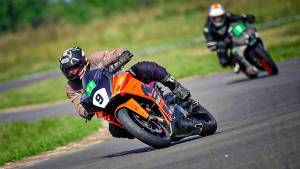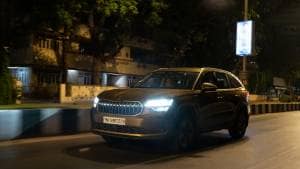Le Mans 24: Iconic Le Mans moments from years gone by
Nothing beats the feeling of watching the start of the 24 Hours of Le Mans. The cars coming barrelling down the start-finish straight and into Dunlop Corner bring with them the weight of anticipation. The excitement that comes with knowing that while it might be a long race, it almost certainly will be a good one. After all, it's Le Mans. A race where heroes are born, where icons are forged, and where resilience isn't a virtue but a requirement. And where, sometimes, despite our deepest desire that it not be so, disaster occurs. Not all significant moments in one's life can be pleasant. So it is with Le Mans.
If the world hadn't been collectively fighting the COVID-19 pandemic, some of us might have actually been trackside at the Le Mans 24 right around now. However, in its absence, we've decided to bring you eight iconic Le Mans moments, arranged in chronological order, to make up for the delay in the 88th edition of the race.
1955: Disaster strikes
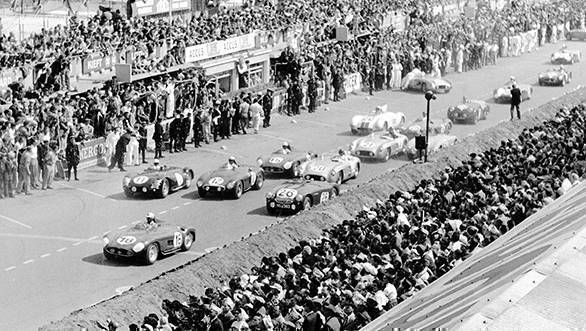 Le Mans 1955: Mercedes-Benz entered several 300 SLR racing sports cars in this race.
Le Mans 1955: Mercedes-Benz entered several 300 SLR racing sports cars in this race.
We wish we didn't have to begin on a sad note, but maybe it's best to get the bad stuff out of the way right now. Le Mans has seen some dark days, but perhaps none so dark as what transpired at the 1955 edition of the race. The incident that has simply come to be known as "the Le Mans disaster". During the race, Eugene Castelloti put his Ferrari 121LM in the lead early on, with Mike Hawthorn in the Jaguar D-Type in hot pursuit. Juan Manuel Fangio, in the Mercedes 300SLR that he shared with Stirling Moss, overcame a slow start (his pant leg had gotten caught on the gear lever) and soon caught up with the leaders. When Castelloti made a mistake after the first hour, the Jaguar led Le Mans, with the Mercedes chasing after it. It was a glorious battle, with the lap record, ultimately claimed by Hawthorn, broken 10 times within the first two hours of the race. But then, during the race's 35th lap, disaster struck. Hawthorn, having received instructions that he needed to pit, braked suddenly.
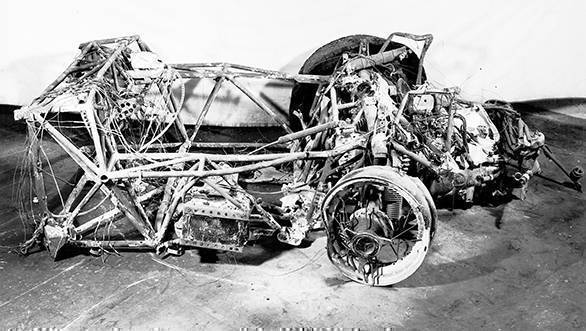 Le Mans, 1955: The chassis of the 300 SLR in which Pierre Levegh had a fatal accident.
Le Mans, 1955: The chassis of the 300 SLR in which Pierre Levegh had a fatal accident.
Lance Macklin, in the Austin Healey that he'd just overtaken, braked hard too and briefly lost control of his car. This unfortunately put him right in the path of the 300SLR of Pierre Levegh. Levegh's car ended up climbing over the rear left of Macklin's car, was then thrown up into the air, and flung into the embankment between the spectators and the track. Levegh perished in the crash, and flying debris from the car killed more than 80 spectators. Mercedes waited for instructions from Stuttgart which arrived around midnight, before withdrawing their two remaining cars, running in first and third at that point, from the race. The manufacturer would not return to motorsport until a full 34 years later, in 1989.
1966: This birth of the GT40
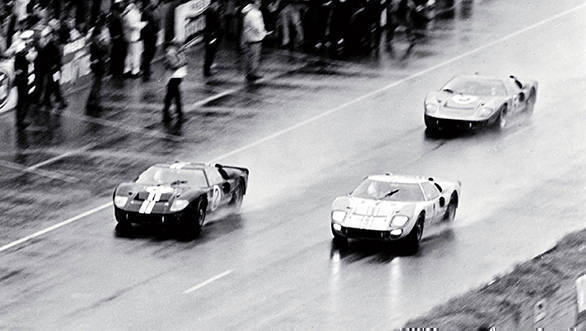 The "photo finish" between the three Ford GT40s at the 1966 Le Mans 24
The "photo finish" between the three Ford GT40s at the 1966 Le Mans 24
"Build me a car that will crush Ferrari at Le Mans." These words from Henry Ford II set off a chain reaction that would ultimately lead to the end of Ferrari's stranglehold on the great race. But the backstory to those famous words is what really is of interest here. Back in the 1960s, "The Deuce" had made Enzo Ferrari an offer Ford would buy Ferrari. In principle, Ferrari had agreed to the deal, but backed out when he realised that the buyout would mean he would also lose control over his race team. Ford II wasn't someone used to not getting his way, and the fact that the deal fell through made him very angry. He barked those words out and things were set in motion. Actually building a Ferrari-beater specifically for the Le Mans 24 was quite complicated. Especially since the American squad, led by Carroll Shelby, had only 10 months to do it. Time constraint or not, the Ford GT40 was born. Three GT40s went to the 1964 Le Mans 24. Two retired with gearbox issues, and the third caught fire. Their results at Le Mans '65 left a lot to be desired. Not a single Ford crossed the finish line at the end of the race. And then came the 1966 season, when fortune finally favoured Ford. The GT40 Mk IIs were so dominant, that the Ford team locked out the Le Mans podium, even crossing the line in formation all together. (Of course, memories of the 1966 Le Mans are coloured by the fact that Ford had effectively cheated Ken Miles out of the win, and you can watch the Hollywood retelling of the story in the movie Ford v. Ferrari). But that race win was merely the beginning of Ford's Le Mans domination.
1969: Jacky Ickx chooses to walk
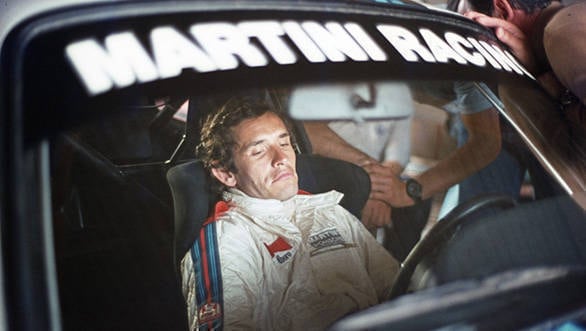 Jacky Ickx made a massive statement at Le Mans in 1969, choosing to walk, instead of being part of the chaotic Le Mans start
Jacky Ickx made a massive statement at Le Mans in 1969, choosing to walk, instead of being part of the chaotic Le Mans start
Think of drivers who campaigned for increased safety in Formula 1, and Sir Jackie Stewart's name springs to mind at once. Think of drivers who campaigned for increased safety in sportscar racing, and it's impossible not to think of Jacky Ickx. For someone actively involved in a sport that centred around speed, Jacky Ickx made a massive statement when he went slow. The year was 1969, and the race began with the famed "Le Mans start". This involved drivers running across the track to their parked cars, jumping in, and then driving off. It was, as you can imagine, a dangerous affair. Cars would weave and dodge each other, with drivers still on track. Since time was of the essence, very few drivers would actually strap themselves into their racecars. Given that the Grim Reaper had visited Le Mans so often, Ickx decided that he'd have no part in the Le Mans start. When the race starter signalled "go", as the others around him sprinted across the track and jumped into their racecars, Ickx walked slowly and deliberately. He climbed into his car, strapped himself into the seat, and effectively started the race from the back of the pack. He'd taken a stand. Ickx would eventually win the 1969 edition of Le Mans, in what is till today the closest actual finish (unlike the staged photo finish in 1966) in the event's 87-edition history. He won by 120m from second-placed Hans Herrmann. And in doing so, he also proved a point. That it was possible to desire safety, and be incredibly quick at the same time.
1970: Porsche starts to win
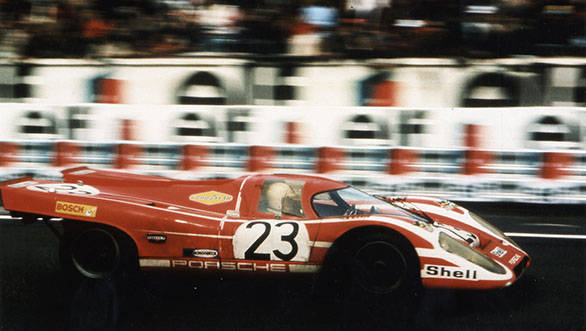 The first of Porsche's 19 Le Mans wins came courtesy Richard Attwood and Hans Herrmann in 1970
The first of Porsche's 19 Le Mans wins came courtesy Richard Attwood and Hans Herrmann in 1970
It is impossible to think of the Le Mans 24 without thinking of Porsche. Or without, at once, conjuring up images of that most iconic of all racecars the Porsche 917. Whether you picture the 917 in red and white stripes, or in Martini Racing livery, or in evocative blue and orange Gulf Racing colours, it doesn't matter. They're all iconic. They've all left their mark on the sport. And they're all part of the reason that the Porsche name is as revered as it is at the greatest 24 hour race of all time. But the first of Porsche's wins at Le Mans, which came back in 1970, is probably the most significant of them all. Their main rivals at the Le Mans 24 that year were the Ferrari 512s. But the weather at the Circuit de la Sarthe that year was awful. Rain came down in buckets, visibility was poor, and the circuit was slippery. So slippery, that two of the Ferrari entries got in an accident that meant they took each other out of the race. It left the way clear for the Porsche Salzburg team's Hans Herrmann and a rather ill (he later found out he had mumps) Richard Attwood to take victory in the 917K. Behind them, the Martini International Racing team's 917L, piloted by Gerard Larrousse and Willi Kauhsen finished second. And third place went to Helmut Marko and Rudi Lins in a Porsche 908/2LH. The best Ferrari would do no better than fourth. Why is Porsche's first Le Mans win so very significant, you might ask. Well, it's because it was the first of their 19 victories at the 24 Hours of Le Mans a record that no other manufacturer is near threatening. Audi, with 13 Le Mans wins, is still six wins adrift.
2006: A sticky victory
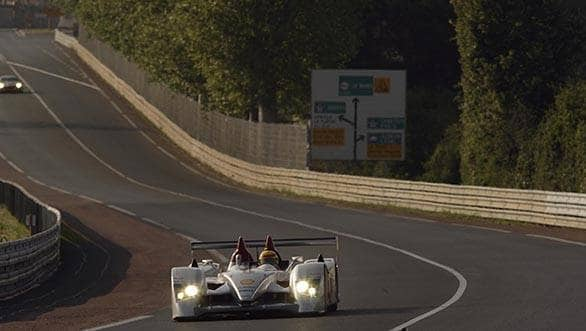 Frank Biela, Marco Werner, Emanuele Pirro in their Audi R10, which became the first diesel car to win Le Mans in 2006
Frank Biela, Marco Werner, Emanuele Pirro in their Audi R10, which became the first diesel car to win Le Mans in 2006
Le Mans is no stranger to diesel engines. As far back as 1949, brothers Jean and Jacques Delettrez had entered the Delettrez Diesel (with a 4.3-litre 6-cylinder engine) in the event. They didn't finish the race. They entered the event again the following year, and failed to finish once again. But in 1950, their's wasn't the only diesel on the grid, there was also the MAP, the first mid-engined car at Le Mans, which, possibly to the relief of the Delettrez brothers, also failed to finish the race. In 2004, a Lola V10 TDI attempted to go the distance at Le Mans, but failed. So, the mantle of the first successful diesel-powered car to race at Le Mans rests with the Audi R10 TDI. The machine was a replacement for the Audi R8, that had won Le Mans five times since 2000, and had become one of the most successful cars ever raced. The R10 TDI won three back-to-back editions of Le Mans between 2006, when it was introduced, and 2008. It kickstarted a period of diesel domination at the event, with the Peugeot 908 HDi FAP (that had been introduced in 2007) finally winning two years later. The Audi R15 TDI won in 2010, the R18 TDI in 2011, and the R18 e-tron Quattro took three consecutive wins between 2012 and 2014. In all, diesel power took nine Le Mans wins, before eventually being dethroned by the hybrid era that soon followed.
2011: An engineer's game
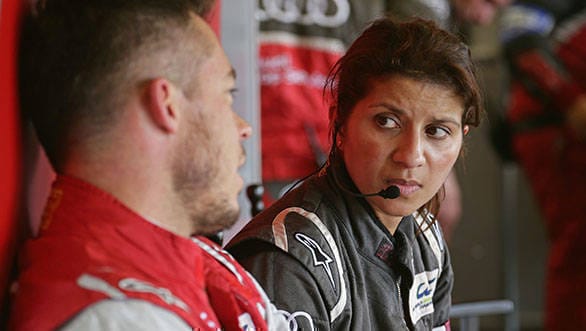 André Lotterer chatting with race engineer Leena Gade, the first female race engineer to win Le Mans
André Lotterer chatting with race engineer Leena Gade, the first female race engineer to win Le Mans
Leena Gade doesn't want to be known as a female race engineer. Instead, she wants to be known simply as a race engineer, who happens to be a woman. We can get behind that. Although it's hard to ignore the fact that Gade is the first female race engineer to win Le Mans. In 2011, Gade was the engineer of the Audi R18 TDI piloted by drivers Benoit Treluyer, Marcel Fassler, and Andre Lotterer, who won Le Mans. When the Treluyer-Fassler-Lotterer combination won Le Mans a second time in 2012, it was once again with Gade sitting at the pit wall over the course of those 24 hours and planning every single detail of how to manage the car's fuel consumption, tyre consumption, and which driver would pit when. That second win helped her solidify her position as one of the most successful engineers in the business at the time. And then in 2014 that same crew went one better, taking their third Le Mans win. As far as iconic Le Mans moments go, the images of Gade and the drivers celebrating their Le Mans victories is pretty special. Of course, with Audi eventually pulling out of Le Mans, Gade moved to head Bentley's motorsport operations, and then headed across the pond. She currently works as an engineer in the WeatherTech Sportscar Championship.
2013: Ninth crown for King Kristensen
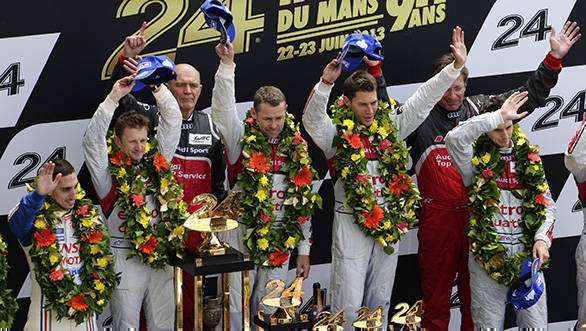 The 2013 winners, Allan McNish, Tom Kristensen and LoÔc Duval - it was Kristensen's 13th and final Le Mans victory
The 2013 winners, Allan McNish, Tom Kristensen and LoÔc Duval - it was Kristensen's 13th and final Le Mans victory
You've got to be pretty successful at Le Mans to earn the title of "Mr Le Mans". And to say that Tom Kristensen is successful is a massive understatement. The Danish driver equalled Jacky Ickx's record of six Le Mans wins in 2004. And the following year, he broke that record, when he took his seventh Le Mans crown. Rumour has it that Ickx even called Kristensen and left a message on his answering machine congratulating him for breaking that record. Well, as things turned out, Kristensen wasn't done. He took an eighth Le Mans win in 2008, breaking his own record. And in 2013, after a bit of a wait, Kristensen took his ninth and final Le Mans win, having piloted the Audi R18 e-tron Quattro to victory alongside Allan McNish and Loic Duval. In between his first Le Mans victory, in the TWR Porsche WSC 95, and his final Le Mans win in the R18, a full 16 years had elapsed. In those sixteen years, he set other records, becoming the only driver to have won six consecutive Le Mans, took six wins at the 12 Hours of Sebring, and won the World Endurance Championship in 2013. As far as his racing career goes, Kristensen is highly decorated. As far as his Le Mans record of nine wins goes, he is unbeaten.
2016: Toyota's dream is crushed
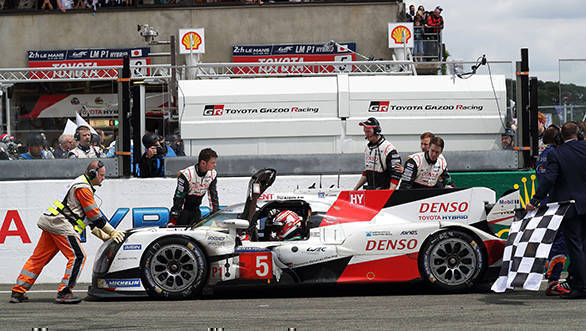 Heartbreak for Toyota as their Le Mans dream is crushed in 2016
Heartbreak for Toyota as their Le Mans dream is crushed in 2016
The silence that descended over the Le Mans paddock was almost funereal. It had been a topsy-turvy race, the very first in Le Mans history to begin behind a Safety Car. The race featured a close battle between defending Le Mans champions, Porsche, the Toyota team who were hoping to finally win with their TS050 Hybrid, and Audi who'd gone without a Le Mans win for a year and didn't like that too much. Well, the lead changed a lot over the course of the 24 hours. But at the very end of the race it looked like Toyota really had it in the bag. Their No.5 TS050 Hybrid, with Kazuki Nakajima at the wheel, was leading the race by 70 seconds. Nakajima came down the start-finish straight, and was about to begin his final lap, when his Toyota ground to a halt. This meant that Neel Jani in the No.2 Porsche was able to go past Nakajima, lead the last lap, and cross the chequered flag first, giving Porsche their 18th Le Mans crown. The atmosphere in the paddock was one of absolute disbelief. And the atmosphere in the Toyota camp was even grimmer, with a crowd of journalists and photographers gathered outside, hoping for a statement from someone in the team, but almost too afraid to ask. We don't know what Kazuki Nakajima must have felt like sitting there in the car as his Le Mans dream fell apart. But we do know that it couldn't have felt good. And it was proof that Le Mans deals out rewards and heartbreak in equal measure.
Starts Rs 2.55 Crore
5204cc
Automatic
610
530
7.63 Kmpl
